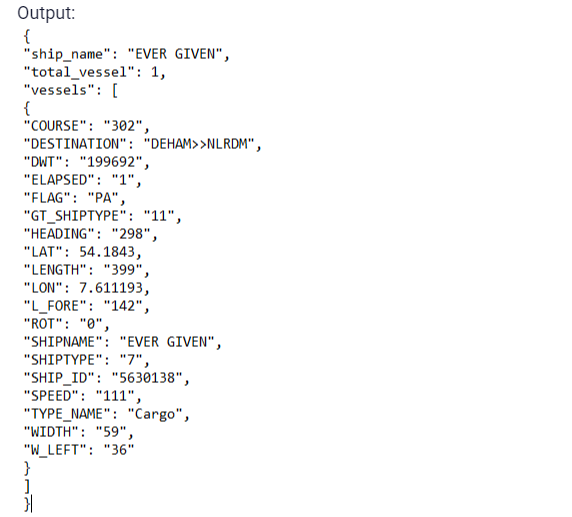Get Accurate Maritime Traffic Data With This API
Are you looking for an API that can provide you with accurate maritime traffic data? If so, you’ve come to the right place!
The maritime shipping industry is one of the oldest and most important industries in the world, responsible for transporting over 90% of the world’s trade. With over 50,000 ships transporting goods and raw materials across the globe, it’s essential to have systems in place to track their movements and ensure they get to their destination wihout trouble.
Tracking ships is essential for the safety, compliance, efficiency, and security of the maritime shipping industry. With the vast number of ships transporting goods and raw materials across the globe, real-time tracking enables shipping companies to monitor vessel movements, ensure compliance with international regulations, optimize shipping routes, and respond quickly to potential threats.
As the shipping industry continues to grow and evolve, tracking technology will become even more critical in ensuring its continued success and sustainability. Currently APIs are at the forefront of innovation, because APIs allow automation, and they provide developers with a library of pre-built functions that can be easily integrated into their applications. This can significantly reduce the time required to develop new features, as developers do not have to build these functions from scratch. Instead, they can simply use the APIs to access pre-built functionality, speeding up the development process.
Maritime Traffic Data APIs are becoming increasingly popular among maritime companies; as they are a great way to keep track of their ships and vessels. Plus, they can also be used to monitor maritime traffic in a specific area or region. This can be helpful for a variety of reasons; such as monitoring the safety of shipping lanes, avoiding collisions, and even identifying potential threats. An API that provides information on vessel location can also help operators ensure that they are complying with regulations related to vessel routing or restricted areas. Similarly, an API that provides information on vessel speeds and emissions can help operators comply with regulations related to environmental standards.
So What API Should I Get?
The information age has made it possible for individuals and organizations to have access to thousands of applications and user interfaces with the aim of streamlining their daily routines and processes, even in an integrated manner. And APIs were specifically created to integrate various applications and their functions, so that developing an app or website is now easier than ever because you don’t need to create everything from scratch. Now that you are better informed about the benefits of a ship tracking API, we invite you to try out Zyla’s Vessel Traffic Information API and see how easy it is to get started.
To make use of it, you must first:
1- Go to Vessel Traffic Information API and simply click on the button “Subscribe for free” to start using the API.
2- After signing up in Zyla API Hub, you’ll be given your personal API key. Using this one-of-a-kind combination of numbers and letters, you’ll be able to use, connect, and manage APIs!
3- Employ the different API endpoints depending on what you are looking for.
4- Once you meet your needed endpoint, make the API call by pressing the button “run” and see the results on your screen.



